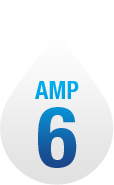Distribution chamber to the Activated Sludge (ASP) plant at Minworth Wastewater Treatment Works (WwTW) in Warwickshire
Client: MWH LIMITEDScale: 1:8.467
The model study was required to investigate proposed changes in the general arrangement of the ASP distribution chamber following the introduction of separate flow streams. The proposals to be evaluated comprised alteration of the existing 24 way distribution chamber arrangement to achieve either two or three process flow streams. Investigation of the various stream options was undertaken in stages with each development stage identified by the following Scenarios:
Scenario A comprised the existing arrangement of the flow division chamber at single stream operation (24 lanes), tested at existing flow rates.
Scenario B comprised the existing arrangement of the flow division chamber at single stream operation (24 lanes), tested at future flow rates, i.e. settled sewage flow plus RAS flows.
Scenario C comprised a modified arrangement of the flow division chamber at single stream operation (16 lanes, i.e. Flumes 1 to 16), tested at future flow rates.
Scenario D comprised a modified arrangement of the flow division chamber at three stream operation (2 x 8 lanes, i.e. Flumes 1 to 8 and Flumes 9 to 16), tested at future flow rates.
Testing of the existing 24 way distribution chamber arrangement for Scenario A, determined that the chamber provided a relatively equitable division of flow to the flume channels, with the exception of a moderate starvation of Flume Channel 21 and moderate bias to Flume Channel 17. Over the flow range tested the flow division was maintained to generally within plus/minus 4 percent of the mean value, with the exception of up to approximately plus 8 percent to Flume 17 and minus 8 percent to Flume 21.
The results of the physical model study showed a similar trend to that predicted within the CFD study, although the extent of flow variation about the mean was generally lower within the physical model compared to the CFD study.
Testing of the existing 24 way distribution chamber arrangement for Scenario B, i.e. at the future maximum flow, determined that the chamber continued to provide a relatively equitable division of flow to the flume channels with the exception of a moderate starvation of Flume Channels 21, 23 and 24. The flow division was maintained to generally within plus/minus 4 percent of the mean value with the exception of approximately minus 6 to 8 percent across Flumes 21, 23 and 24.
Solids testing with simulated settled sewage and RAS type solids indicated the potential for persistent settlement within the distribution chamber, in accordance with site experience. These solids were not fully cleared over the operating range, which was considered to represent a long term operational and maintenance concern.
Solids testing with the available range of simulated RAS type suspended solids was initially only able to provide a qualitative assessment of chamber performance. This indicated an uneven distribution of load with variation apparent between the either side of the chamber and also between the upstream and downstream banks of flume channels. The predicted variation in RAS solids distribution was not consistent with the flow variation.
Hence, in terms of flow distribution, the existing ASP division chamber arrangement was predicted to work well at up to the future maximum inflow, but in terms of self cleansing and load distribution, the arrangement was predicted to perform poorly.
Testing of the existing distribution chamber arrangement for Scenario C, i.e. at the alternative single stream operation with 16 flumes, determined that the chamber produced a highly equitable division of flow to the flume channels. The flow variation was generally within +/- 1 percent of the mean value at maximum inflow and +/- 2 percent at the mid and minimum inflow conditions. Solids testing with simulated settled sewage and RAS type solids indicated the potential for persistent settlement within the distribution chamber
Further to review the three stream option of Scenario D was selected by the Client as the preferred process configuration and the distribution chamber was developed and refined accordingly on this basis. The development of proposed modifications was required to account for practical constraints imposed by the need to maintain live operation and the restricted duration available for unit isolation that this would dictate.
This proposed final arrangement of the Scenario D ASP distribution chamber was optimised for flow distribution and solids handling. The chamber was modified to include a central dividing wall, together with mass infill plus sloping fillet infill benching. The various infill sections were rated from high to low priority in accordance with their perceived benefit. This was intended to allow the relative cost/benefit to be assessed at the increase in complexity of infill geometry.
The final proposed Scenario D Chamber arrangement resulted in a highly equitable division of flow to the flume channels with flow variation generally maintained to within +/- 2 percent of the mean value at over the full flow range. The proposed arrangement was considered to offer the optimum chamber configuration to minimise potential solids deposition within the practical limits to construction imposed by the need to maintain live operation.




















